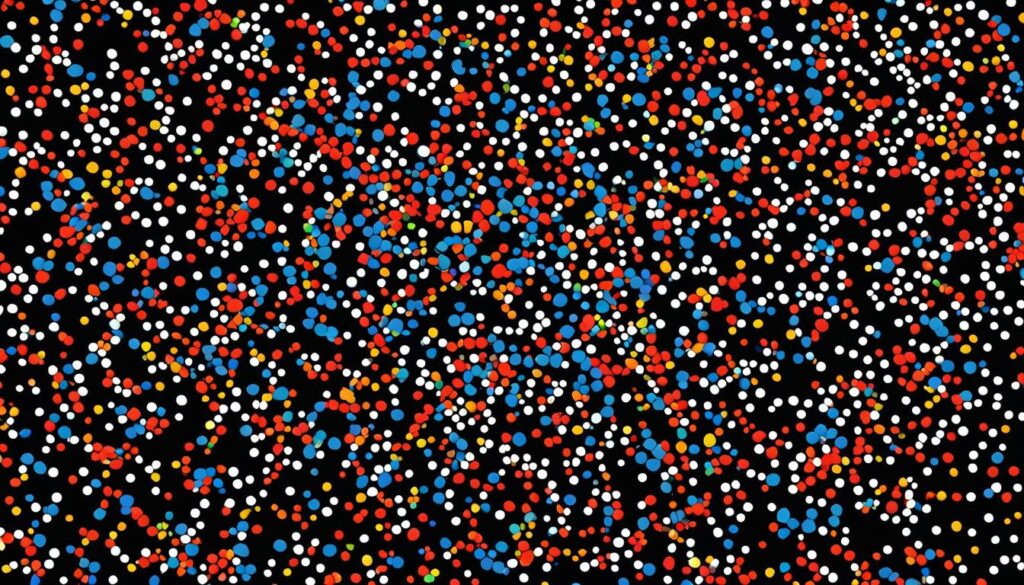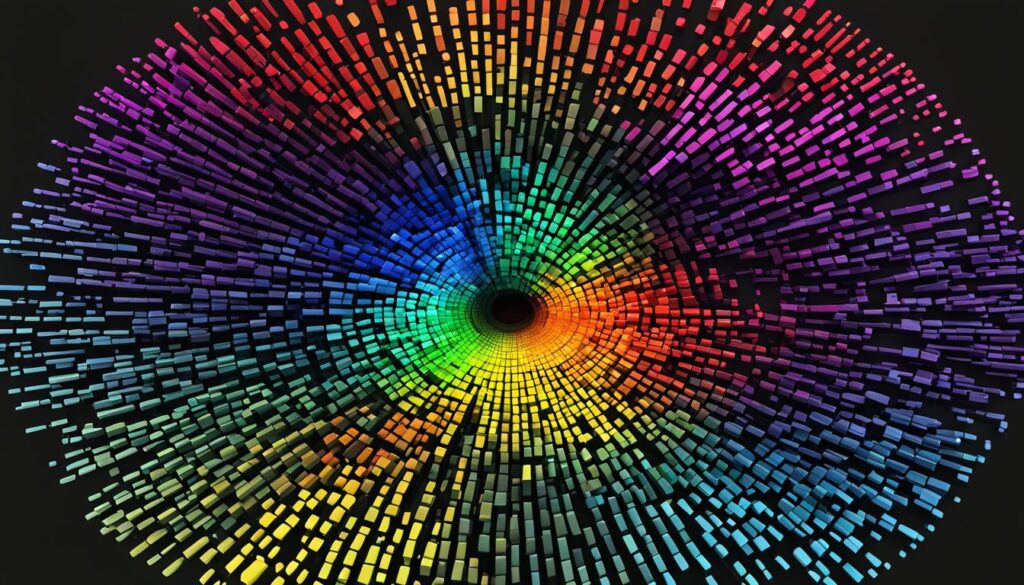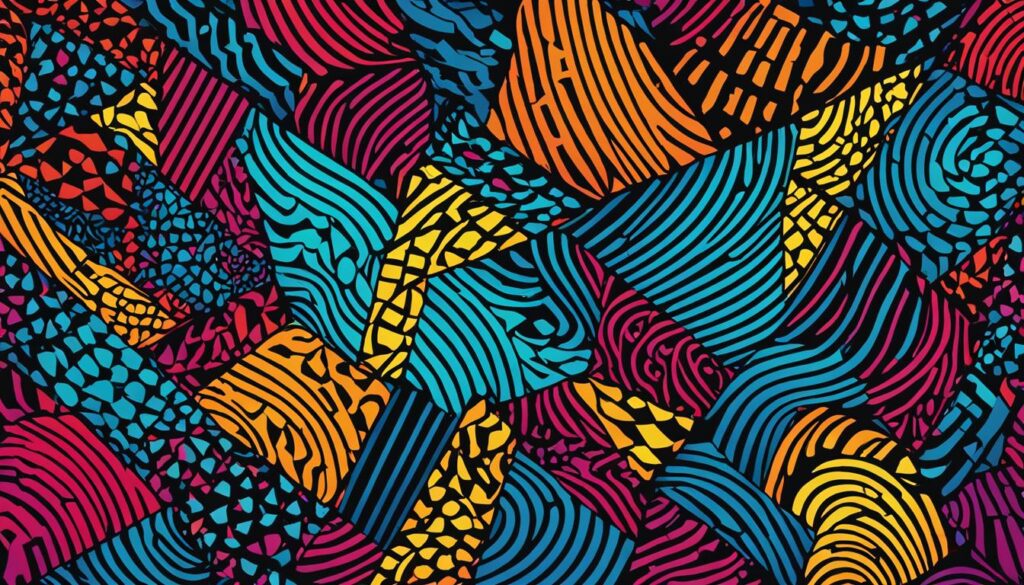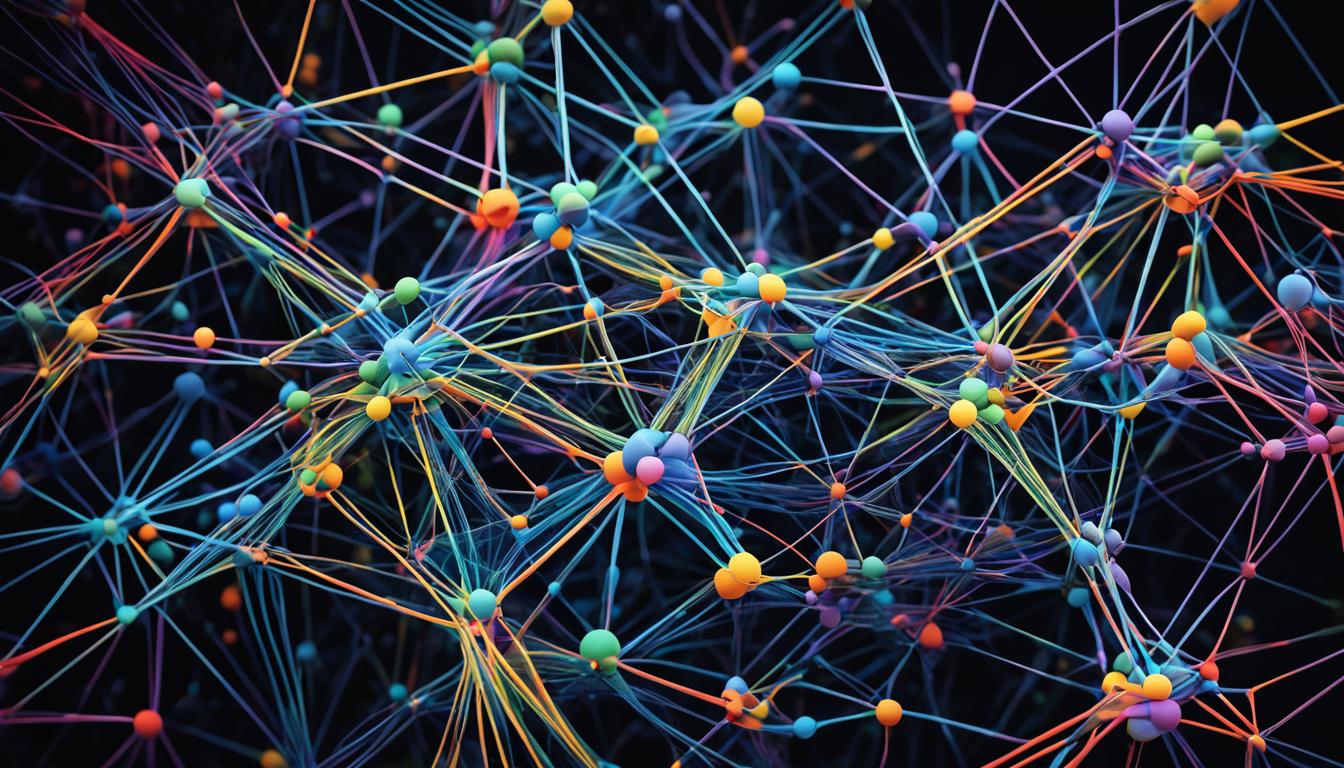Welcome to our simple guide on unsupervised learning in artificial intelligence (AI). In this article, we will explore the concept of unsupervised learning, its applications, and the techniques involved.
Whether you are new to AI or looking to expand your knowledge, this guide will provide valuable insights into unsupervised machine learning.
Unsupervised learning is a set of statistical tools used when we only have features and no specific targets. It involves finding exciting ways to visualize data and discovering subgroups of similar observations.
Through techniques like principal component analysis (PCA) and clustering, unsupervised learning helps us uncover patterns and correlations without needing labeled outputs.
Contents
- 1 Principal Component Analysis (PCA)
- 2 Clustering Methods
- 3 Mini Project 1 – Color Quantization with K-means Clustering
- 4 Mini Project 2 – Dimensionality Reduction with PCA
- 5 Applications of Unsupervised Learning in Marketing
- 6 Advantages and Limitations of Unsupervised Learning
- 7 Conclusion
- 8 FAQ
- 8.1 What is unsupervised learning in artificial intelligence?
- 8.2 What is principal component analysis (PCA)?
- 8.3 What are clustering methods in unsupervised learning?
- 8.4 Can you explain the mini project on color quantization with k-means clustering?
- 8.5 What is the mini project on dimensionality reduction with PCA?
- 8.6 What are some applications of unsupervised learning in marketing?
- 8.7 What are the advantages and limitations of unsupervised learning?
- 8.8 How does unsupervised learning contribute to artificial intelligence?
- 9 Source Links
Key Takeaways:
- Unsupervised learning is a branch of AI that analyzes data without predefined targets.
- Principal Component Analysis (PCA) is a technique used to find a low-dimensional representation of a dataset.
- Clustering methods are commonly used in unsupervised learning to partition observations into distinct groups.
- Unsupervised learning has applications in marketing, customer prediction, segmentation, and finding lookalike audiences.
- While unsupervised learning offers many benefits, it also has limitations, such as potential overestimation of similarities between groups.
Principal Component Analysis (PCA)
Principal Component Analysis (PCA) is widely used in unsupervised learning algorithms. It provides a way to find a low-dimensional representation of a dataset that captures the majority of the variation.
PCA helps us understand and visualize complex data more effectively by identifying the most exciting features.
The key concept behind PCA is to compute the principal components, linear combinations of the original features. These components are selected in a way that they explain the maximum amount of variance in the dataset.
Also read: How Is Artificial Intelligence Being Used In Healthcare?
By representing the data in terms of these components, we can reduce the dimensionality of the dataset while still preserving the necessary information.
One of the main advantages of PCA is its ability to facilitate data visualization. By reducing the dimensionality, PCA allows us to plot the data in lower-dimensional space, such as a 2D or 3D plot. This visualization helps us observe patterns, clusters, or outliers that may not be apparent in the original high-dimensional space.
Additionally, PCA can be used as a preprocessing step before applying other machine learning algorithms, as it eliminates redundant or noisy features.
How PCA Works
The process of PCA involves the following steps:
- Standardize the data: Before performing PCA, it is essential to standardize the dataset to have zero mean and unit variance. This step ensures that all features are on a similar scale.
- Compute the covariance matrix: The covariance matrix is calculated by taking the pairwise covariances between all pairs of features in the dataset.
- Compute the eigenvectors and eigenvalues: We derive the eigenvectors and eigenvalues from the covariance matrix. The eigenvectors represent the directions in the feature space, while the eigenvalues indicate the variance captured by each eigenvector.
- Select the principal components: The components are selected based on the eigenvalues. The elements corresponding to the largest eigenvalues explain the most variance and are chosen as the main components.
- Transform the data: Finally, the original dataset is transformed into the lower-dimensional space defined by the principal components. This transformation can be used for visualization or as input for subsequent machine learning algorithms.
Real-Life Application of PCA
PCA has various real-life applications across different fields. For example, in image processing, PCA can be used for facial recognition or image compression.
In finance, PCA is employed to reduce the dimensionality of financial datasets and identify relevant factors that explain the market’s behavior. Furthermore, PCA plays a crucial role in genetics, where it helps analyze gene expression data and identify genes most influential in determining biological traits.
PCA is a powerful tool in unsupervised learning algorithms that allows us to condense complex datasets, identify essential features, and gain valuable insights.
Also read: How Artificial Intelligence Is Changing the World
Clustering Methods
Clustering is a fundamental technique in unsupervised learning that focuses on finding subgroups or clusters within a dataset. The main objective is to partition observations into distinct groups based on similarity.
This process can help uncover hidden patterns and relationships in the data, providing valuable insights for analysis and decision-making.
Two standard clustering methods used in unsupervised learning are k-means clustering and hierarchical clustering.
K-means Clustering
K-means clustering is a popular technique that aims to group observations into a pre-specified number of clusters.
It works by iteratively assigning each observation to the nearest cluster centroid and recalculating it based on the newly appointed observations. This process continues until convergence is achieved, resulting in a final partition of the data.
K-means clustering is advantageous due to its simplicity and scalability, making it suitable for large datasets. It is widely used in various domains, including customer segmentation, image processing, and anomaly detection.
Hierarchical Clustering
Hierarchical clustering is a method that creates a dendrogram, showing all possible clusters and their relationships.
It starts by considering each observation as an individual cluster and iteratively merges clusters based on similarity, forming a hierarchical structure. The dendrogram visually represents the clustering process, allowing for flexible exploration of different cluster configurations.
Hierarchical clustering is advantageous as it does not require a pre-specified number of clusters, allowing the exploration of different levels of granularity. It is commonly used in biology, social sciences, and market research.
Below is an example of a dendrogram illustrating the hierarchical clustering process:

Hierarchical clustering offers a flexible approach to discovering meaningful groups within a dataset, making it a valuable tool in unsupervised learning.
Mini Project 1 – Color Quantization with K-means Clustering
In this mini project, we will explore the fascinating world of color quantization using k-means clustering. Color quantization is a technique that reduces the number of distinct colors used in an image while preserving its integrity.
By applying k-means clustering, we can group similar colors and represent them with fewer colors, resulting in a visually pleasing and efficient image representation.
Let’s dive into the steps involved in performing color quantization using k-means clustering:
- Step 1: Convert the image into a 2D matrix
First, we need to convert the image into a 2D matrix representation. Each entry in the matrix corresponds to a pixel in the image and contains the color information. This matrix will serve as the input for the k-means clustering algorithm.
- Step 2: Train the model to aggregate colors
Next, we train the k-means clustering model using the 2D matrix representation of the image. The model learns to identify and group similar colors based on their similarities. By specifying the desired number of colors we want in the final image, the model will aggregate the colors accordingly.
- Step 3: Reconstruct the image with the specified number of colors
Once the model has learned the clustering patterns, we can reconstruct the image using the set number of colors. The model assigns the closest representative color to each pixel in the picture, resulting in a reduced color palette while maintaining the picture’s overall structure and visual appeal.
By leveraging the power of k-means clustering, we can achieve impressive results in color quantization. Let’s put these steps into action and witness the transformation of an image through the magic of unsupervised learning techniques.

Benefits of Color Quantization:
Color quantization offers several advantages:
- Reduced memory storage for images
- Faster rendering and processing
- Enhanced visual appeal
- Improved image compression
Color quantization with k-means clustering is just one example of the many exciting applications of unsupervised learning techniques. Its potential extends beyond image processing to areas such as data compression, computer vision, and more. Let’s explore more fascinating projects and methods in the upcoming sections.
Mini Project 2 – Dimensionality Reduction with PCA
Welcome to the second mini project, where we will explore dimensionality reduction using principal component analysis (PCA).
Dimensionality reduction is a powerful technique in unsupervised learning that allows us to simplify complex datasets by reducing the number of features while retaining important information.
PCA, one of the most widely used unsupervised learning techniques, helps us identify the underlying patterns and structure within the data.
By transforming the original high-dimensional dataset into a smaller set of principal components, PCA allows us to visualize the data in a lower-dimensional space, typically two or three dimensions.
In this project, we will use the well-known iris dataset, which consists of different measurements of iris flower species. We aim to reduce the four-dimensional feature space to a two-dimensional plot, enabling us to gain insights into the relationships between the other iris species based on their measurements.
Let’s get started with the following steps:
- Import the necessary libraries, including numpy, pandas, and scikit-learn.
- Load the iris dataset using Scikit-learn’s built-in dataset module.
- Preprocess the dataset by scaling the features to have zero mean and unit variance.
- Create an instance of the PCA class and fit it to the preprocessed dataset.
- Compute the explained variance ratio for each principal component and determine the number of components to retain.
- Transform the preprocessed dataset into the reduced-dimensional space by applying the PCA transformation.
- Visualize the transformed dataset in a 2D plot, where each point represents an iris flower.
By reducing the dimensionality of the iris dataset with PCA, we can observe any inherent clustering or separability between the different iris species. Let’s delve into the implementation and visualizations to uncover the hidden patterns within the data.
Before we proceed, take a moment to familiarize yourself with the iris dataset:
| Sepal Length (cm) | Sepal Width (cm) | Petal Length (cm) | Petal Width (cm) | Species |
|---|---|---|---|---|
| 5.1 | 3.5 | 1.4 | 0.2 | Setosa |
| 4.9 | 3.0 | 1.4 | 0.2 | Setosa |
| 7.0 | 3.2 | 4.7 | 1.4 | Versicolor |
| 6.4 | 3.2 | 4.5 | 1.5 | Versicolor |
| 6.3 | 3.3 | 6.0 | 2.5 | Virginia |
| 5.8 | 2.7 | 5.1 | 1.9 | Virginia |
As an aid to help you understand the iris dataset, here’s an image of the three different iris species:

Now let’s dive into the code and witness the power of dimensionality reduction with PCA!
Applications of Unsupervised Learning in Marketing
Unsupervised learning techniques play a crucial role in the field of marketing, offering valuable insights and opportunities for optimization.
By leveraging these techniques, businesses can gain a competitive edge by understanding customer behavior, making accurate predictions, and identifying lucrative target segments.
Customer Prediction
Unsupervised learning algorithms empower marketers to predict customer behavior. By analyzing vast amounts of data, AI models can uncover hidden trends and patterns that might go unnoticed with traditional analysis.
These insights provide valuable information for developing marketing strategies, personalized campaigns, and product recommendations that align with customers’ preferences and needs.
With the ability to anticipate customer actions, businesses can enhance customer satisfaction, increase engagement, and drive conversions.
Customer Segmentation
Segmenting customers based on demographics, geography, psychographics, and behavioral traits is a fundamental strategy in marketing.
Unsupervised learning techniques enable businesses to automatically partition their audience into distinct segments, allowing for tailored and targeted marketing efforts.
By understanding the unique characteristics and preferences of each segment, businesses can personalize their messaging, refine their marketing strategies, and maximize the effectiveness of their campaigns.
This approach ensures that customers receive relevant and compelling content, improving customer satisfaction and increasing retention rates.
Lookalike Audiences
Finding new customers who resemble high-value existing customers is a priority for most marketers. Unsupervised learning provides a powerful solution through the concept of lookalike audiences.
By analyzing the similarities and patterns within existing customer data, AI models can identify individuals outside the organization’s current customer base who exhibit similar characteristics and behaviors.
This enables marketers to target these “lookalikes” with tailored campaigns, increasing the likelihood of acquiring new customers with a high potential for loyalty and profitability.
Advantages and Limitations of Unsupervised Learning
Unsupervised learning offers several benefits, making it a powerful tool in artificial intelligence. By harnessing the power of unsupervised learning algorithms, you can:
- Handle unlabeled data: Unsupervised learning allows you to work with datasets that lack explicit target labels. This is particularly useful when dealing with large amounts of unstructured data, enabling you to uncover hidden patterns and structures.
- Perform complex processing tasks: With unsupervised learning, you can tackle intricate processing tasks, such as data clustering, anomaly detection, and feature extraction. These tasks help understand the underlying structure of data and extract meaningful insights.
- Discover underlying structures: Unsupervised learning algorithms can reveal a dataset’s inherent structure and relationships without relying on predefined labels. This can lead to the discovery of hidden patterns and dependencies that can inform decision-making processes.
“Unsupervised learning allows you to uncover hidden patterns and structures in unlabeled data.”
As with any approach, unsupervised learning also has its limitations that need to be taken into consideration:
- Overestimating similarities: Clustering algorithms used in unsupervised learning can sometimes overestimate similarities between groups. This can lead to grouping observations that may not belong together, resulting in inaccurate analysis or decision-making.
- Lack of individual focus: Unsupervised learning techniques, such as clustering, often categorize observations into groups without considering personal characteristics. This lack of emotional focus can limit the effectiveness of certain applications that require personalized predictions or recommendations.
Despite these limitations, the benefits of unsupervised learning make it a valuable tool for exploring and understanding complex datasets.
By leveraging the power of unsupervised learning algorithms, you can gain real-time insights, handle unlabeled data, and unlock hidden patterns, contributing to more informed decision-making processes.

| Advantages of Unsupervised Learning | Limitations of Unsupervised Learning |
|---|---|
| Handles unlabeled data | Overestimates similarities between groups |
| Performs complex processing tasks | Lacks individual focus |
| Discovers underlying structures |
Conclusion
Unsupervised learning is a powerful technique in artificial intelligence that allows you to uncover hidden patterns and relationships within data without needing labeled outputs.
By leveraging unsupervised learning algorithms, you can gain valuable insights from complex datasets, enabling you to make accurate predictions and solve real-world problems.
From color quantization using k-means clustering to dimensionality reduction through principal component analysis (PCA), unsupervised learning offers many applications.
In the realm of marketing, unsupervised learning techniques are instrumental in customer prediction and segmentation, allowing you to understand your target audience better and tailor your strategies accordingly.
Additionally, unsupervised learning helps identify lookalike audiences, enabling marketers to reach new prospects similar to their most valuable customers.
By understanding the principles and techniques of unsupervised learning, you can unlock the full potential of artificial intelligence.
Unsupervised learning provides a valuable tool for driving insights and innovation, whether you’re uncovering patterns in data, simplifying complex datasets, or optimizing your marketing efforts.
Embrace the power of unsupervised learning algorithms and explore their endless possibilities for a data-driven future.
FAQ
What is unsupervised learning in artificial intelligence?
Unsupervised learning is a set of statistical tools used when there are only features and no targets. It involves finding exciting ways to visualize data or discovering subgroups of similar observations.
What is principal component analysis (PCA)?
Principal component analysis (PCA) is a technique used to find a low-dimensional dataset representation that captures most of the variation. It helps in visualizing the data and identifying the most exciting features.
What are clustering methods in unsupervised learning?
Clustering methods involve finding subgroups or clusters in a dataset. Two standard clustering methods are k-means clustering, which separates observations into a pre-specified number of clusters, and hierarchical clustering, which creates a dendrogram showing all possible clusters.
Can you explain the mini project on color quantization with k-means clustering?
In this mini project, we perform color quantization on an image using k-means clustering. Color quantization reduces the number of distinct colors in an image while preserving its integrity. We implement steps such as converting the image into a 2D matrix, training the model to aggregate colors, and reconstructing the image with the specified number of colors.
What is the mini project on dimensionality reduction with PCA?
In this mini project, we use PCA to reduce the dimensionality of a dataset and visualize it in a 2D plot. Dimensionality reduction simplifies complex data and helps find underlying patterns. We import the iris dataset, compute the first two principal components, and plot the data based on these components.
What are some applications of unsupervised learning in marketing?
Unsupervised learning is used in marketing for customer prediction, where AI models analyze data to discover hidden trends and insights about customer behavior. It is also used for customer segmentation, to divide the audience into different tiers based on demographics, geography, psychographics, and behavioral traits. Additionally, unsupervised learning helps find lookalike audiences for targeted marketing.
What are the advantages and limitations of unsupervised learning?
Unsupervised learning has advantages such as the ability to handle unlabeled data, perform complex processing tasks, and discover the underlying structure of data. It can provide real-time insights and solve problems where labeled data is scarce. However, it has limitations, including the potential to overestimate group similarities and lack of individual focus in clustering algorithms.
How does unsupervised learning contribute to artificial intelligence?
Unsupervised learning is a valuable tool in artificial intelligence as it allows us to find patterns and correlations in data without needing labeled outputs. It lets us visualize and understand complex datasets, make predictions, and solve problems. Unsupervised learning has many applications in various fields, including marketing.




